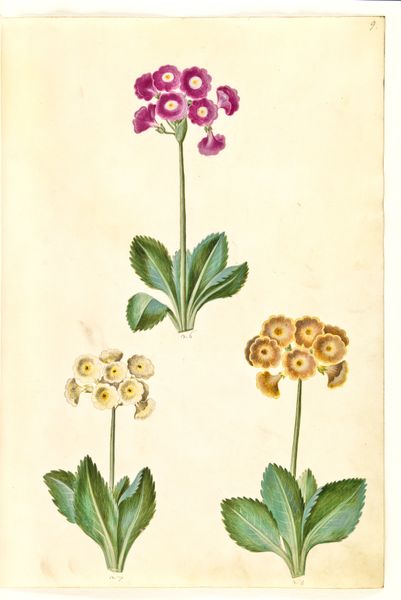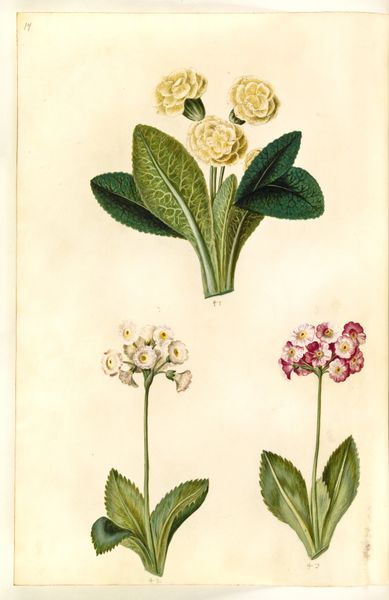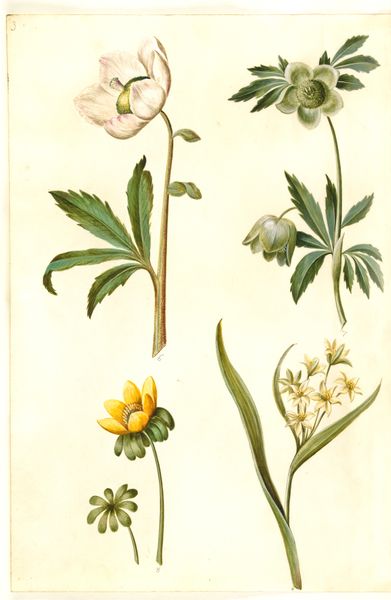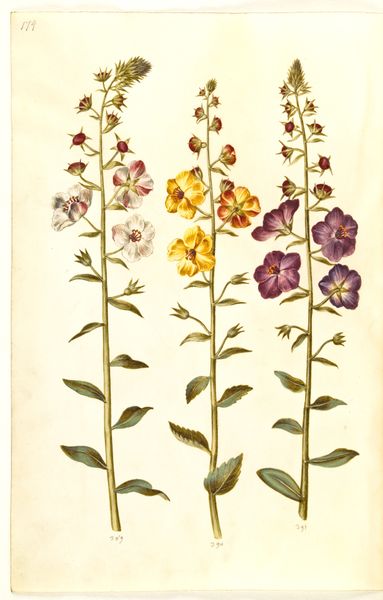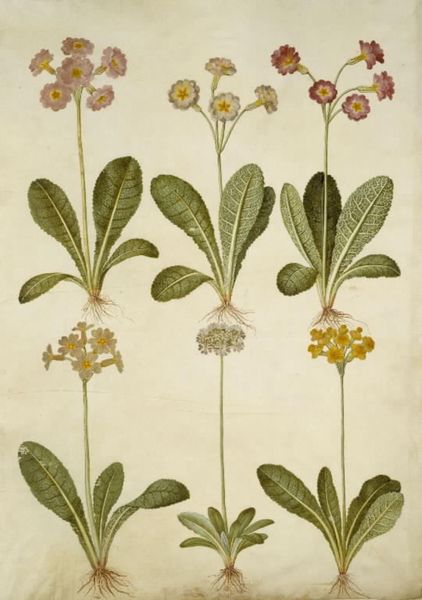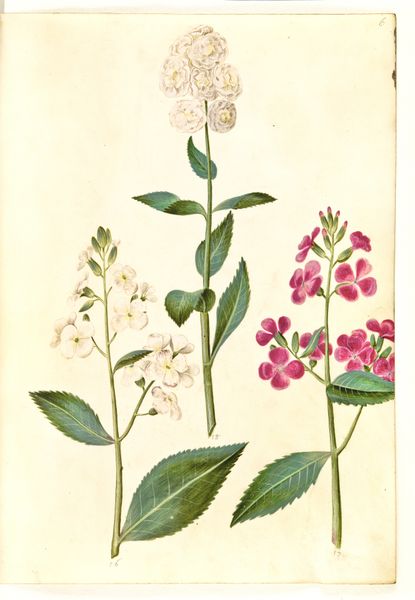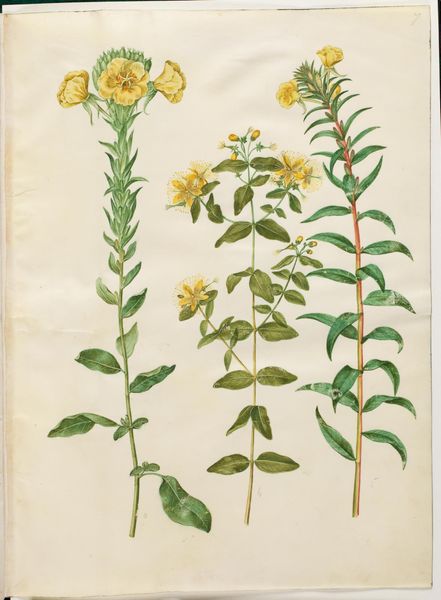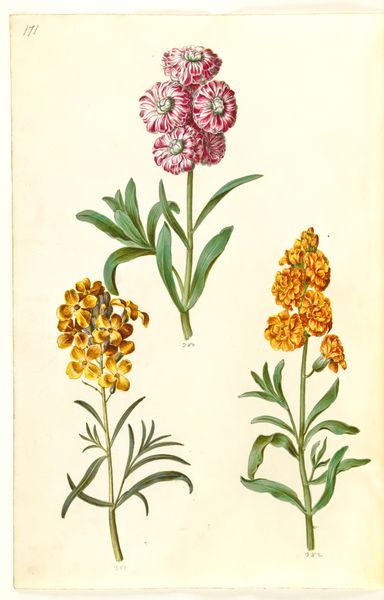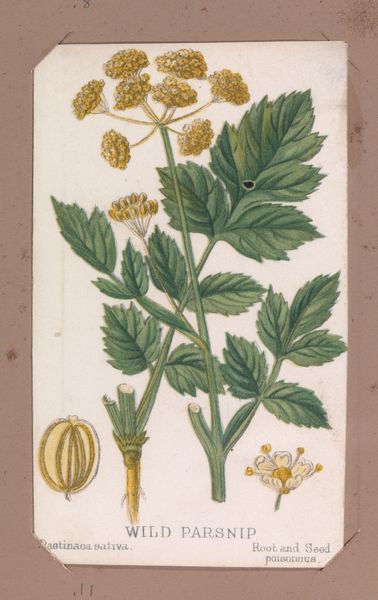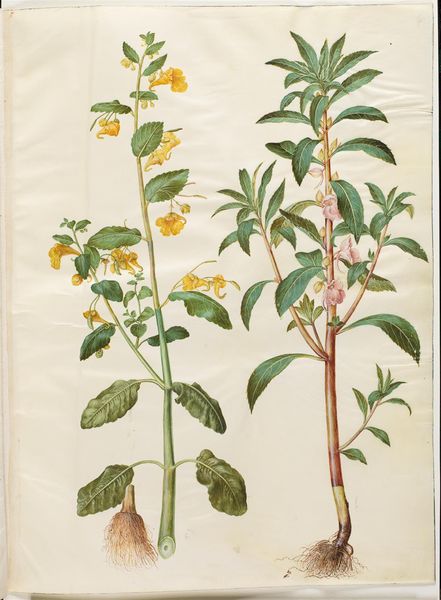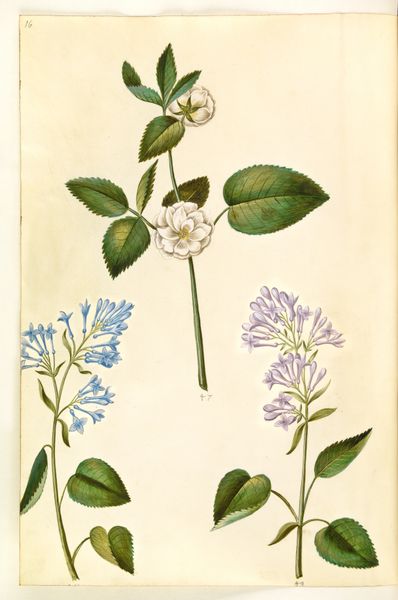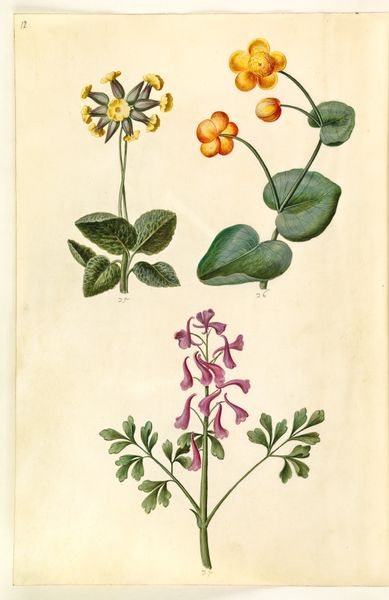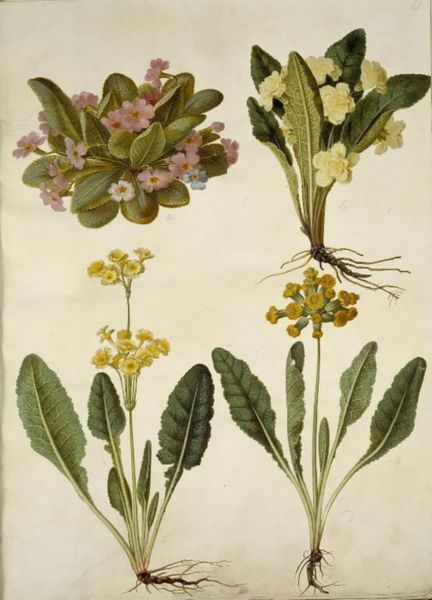
Primula ×polyantha (?); Primula veris (?) 1635 - 1664
0:00
0:00
drawing, gouache, watercolor
#
drawing
#
gouache
#
watercolor
#
watercolour illustration
#
academic-art
#
botanical art
#
watercolor
Dimensions: 375 mm (height) x 265 mm (width) x 85 mm (depth) (monteringsmaal), 358 mm (height) x 250 mm (width) (bladmaal)
Curator: This piece presents us with a question mark right in its title: "Primula ×polyantha (?); Primula veris (?)" made with watercolor and gouache sometime between 1635 and 1664, and attributed to Hans Simon Holtzbecker. The artwork presents three seemingly different species of primula against an off-white backdrop. Editor: Ah, so Holtzbecker was hedging his bets, huh? Question marks included. I’d say my first impression is that they look… cheerful. In a slightly melancholic way. You know, like a sunny day tinged with the knowledge that autumn is coming? Curator: That's a very evocative way to put it! What's interesting here is how Holtzbecker’s precision is itself a cultural artifact, reflecting a broader impulse in 17th-century science to classify and organize the natural world. How does this impulse intersect with the rise of colonialism and the exploitation of resources? Editor: You've sent my head spinning to far flung places with this botanical piece... Seriously, though, I guess it’s the way he’s so meticulous, it reminds you that someone actually took the time to really *look* at these flowers. Which, in our crazy world, is kinda radical. Like, stop, smell the roses, and really *see* them, you know? Before we lose them. Curator: Exactly. This representation speaks to a desire for control and knowledge, but also a very genuine appreciation. And consider, for a moment, the perspective of the botanical artist at the time. What role might women have played, for example, in either the cultivation of specimens or artistic patronage, given prevailing gender norms that privileged them with overseeing domestic spaces and cultivating gardens? Editor: Yeah, makes you wonder about all the hidden stories behind these "simple" depictions. If the image could talk... Curator: Well, maybe this detailed drawing already *is* a way of talking. Consider it within the history of science, for instance; how might this artwork be speaking about our contemporary ecological crises and inspire dialogue and actions around preserving biodiversity? Editor: True. There is a lot going on beneath the surface if you take the time to explore the many layers to this picture. Curator: Indeed, these historical depictions of flora invite us to consider the complex relationships between art, science, power, and the natural world, reminding us that even seemingly simple images carry profound cultural weight. Editor: And sometimes, simply a deep love of bright yellow flowers, and maybe even, I’d argue, hope! A little reminder of beauty when you really, really need it.
Comments
No comments
Be the first to comment and join the conversation on the ultimate creative platform.
